It is Graduation Day for the first cohort of taught MA MEMS and Modern History students next Friday, so in the blog next week I will be revealing the winner of the first Lawrence Lyle Memorial Prize with, I hope, a photograph. However, this week I’ll bring you two brief reports on the Kent History Postgraduate meeting on Wednesday and Professor David Carpenter’s joint Historical Association and Canterbury Cathedral Archives & Library lecture on Thomas Becket and Henry III, as part of Becket 2020 on Thursday.
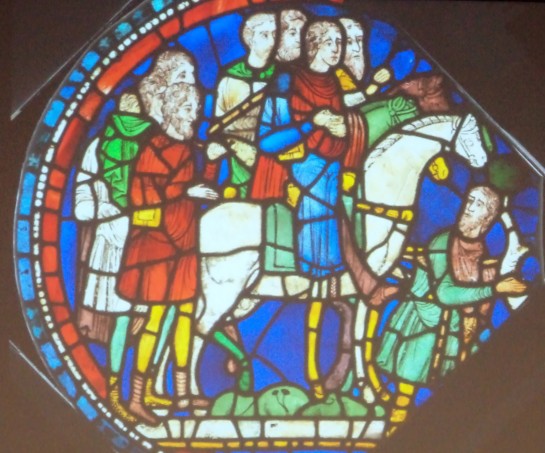
The first presentation on Wednesday was by Dean Irwin, who gave us his paper from the Jerusalem conference on ‘Money Matters’ he had attended over Christmas. Unusually for Dean it did involve a few people rather than solely documents, although not many! However he did begin by recapping about the way debt transactions had been authenticated through the tripartite format whereby the two parties to the debt and the Crown each received a copy (indenture) of the transaction, the creditor’s seal affixed to the foot of the document. He then brought in the idea of ‘entanglement’, as articulated by Elisheva Baumgarten, which can be seen as equating to complexity where matters become intertwined as the result of bringing together different legal traditions, modes of recording, and language, for example. This, he feels, is symptomatic of Jewish moneylending transactions in the 13th century and what he sought to explore was the reality of how, where, when etc such transactions took place. For example, the coming together of the two parties involved would have taken place at the archa where the tripartite document was drawn up and interestingly Dean has found that very occasionally this took place even on Saturday.
Moving on, Dean next explored the changes and complications that had occurred regarding Jews and the law during the same period, whether we are looking at internal Jewish disputes that were heard within the Jewish community at beth din, except for certain serious offences that were tried in a Christian court – the Exchequer of the Jews – the jury comprising solely Jews if Christians weren’t involved, or cases involving money transactions, and thus Jews and Christians that were similarly held at the Exchequer of the Jews. Consequently, as Dean was keen to point, this complexity of royal and Jewish law can be viewed as having become entangled, the Crown prepared to borrow Jewish custom and codify it in what became the Statute of the Jewry (1233).
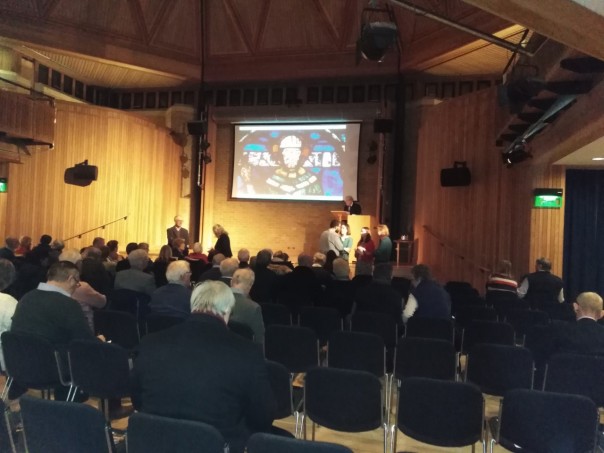
Such entanglement is also visible in the physical running of the archa – the legal recording of the moneylending transactions and the official storage of the third part of the agreement in a chest – for here, as Dean discussed, we have the two Christian and two Jewish chirographers, all leading members of their respective communities, and their two clerks, who were as at home drawing up these agreements as they were dealing with legal matters relating to civic government and transactions involving local citizens and/or religious houses. Similarly, the archa, the chest, was likely to be stored in civic spaces, and, just like the civic government’s own chest that was to be stored in the mayor’s house at Sandwich, at Canterbury in 1264 this meant the archa was at the house of Simon Payable, a former bailiff of the city, when things got a little tricky politically!
Dean also discussed ideas about language and the uses of Latin, Hebrew and French in a society in which orality and written records were similarly entangled in fascinating ways that were first discussed to a degree by Michael Clanchy in his ground-breaking work, From Memory to Written Record (1979). More work of these issues and associated matters has been undertaken since then and I’ll be coming back to this topic later in the year when Claire Bartram’s edited collection on book production and scribal practice is published. Needless to say, Dean’s presentation sparked numerous questions and comments before we moved on to explore the Gough Map of the United Kingdom, where we looked at the whole and then at Kent. However, I’m going to leave that for this week, although thanks very much to members of the group for some very helpful ideas and suggestions.
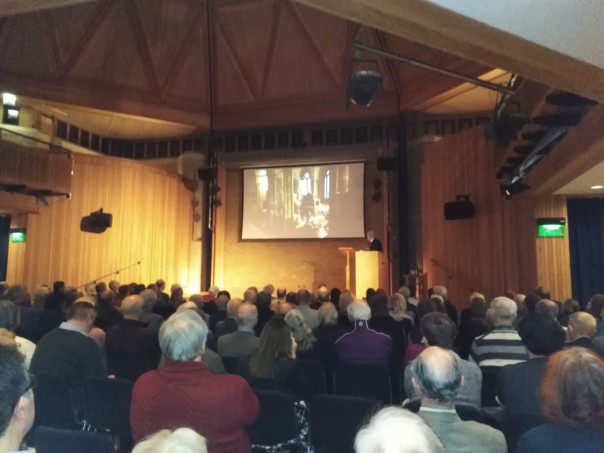
So to Professor David Carpenter’s lecture, chaired by Professor Louise Wilkinson that took place in a packed hall at the Cathedral Lodge. David began by describing the magnificent celebration on Tuesday 7 July 1220 of the Translation of Becket from the tomb in the crypt to the shrine in the Trinity Chapel, which he sees as Stephen Langton’s crowning achievement. Such a linking of Becket and Langton is also seen through the latter’s seal, albeit David’s point was that in reality their ideas respecting the Crown and the Church were significantly different. For as he was as keen to point out, Langton was operating in a different world that necessitated the restoration of royal power, which would thereby strengthen the Church as part of a partnership, after the disastrous problems of civil war and the arrival of foreign powers during John’s reign and the first years of the young Henry III. In this pursuit Langton was not alone, and he strongly supported Hubert de Burgh’s efforts to retake royal power and authority from certain magnates, as well as recouping taxes in order to store the royal finances that had effectively collapsed during the civil war. Thus the great spectacle in July 1220 was part of this wider strategy that two years later would include the bishops taking a leading role in seeking to restore the royal lands, and then a year later an agreement with Hubert de Burgh that provided positions for two bishops within royal government – a long way from Becket’s demarcation between Church and Crown.
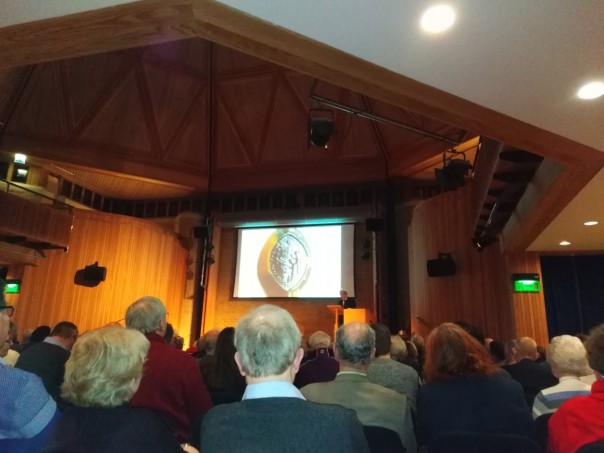
To illustrate further Langton’s differing stance to Becket, David took his audience through the development of Magna Carta from the first draft solely the product of the barons to the modified and reissued version of 1225. Among the changes along the way to the ‘final’ version was the inclusion of the first clause relating to the autonomy of the Church, especially episcopal appointments, in the charter John sealed at Runnymede, which Langton was prepared to forego in 1225. By so doing, Langton had orchestrated the creation of a compromise that all parties could accept, including the king who this time was not forced to set his seal and which could be witnessed by all ‘the great and the good’ of England.
Having discussed Langton and Becket, David turned his attention to Henry III and Becket, and here he felt there was still no meeting of minds whatever the young king may have taken from being part of the great occasion in 1220. David’s new biography on Henry III is due out soon, and among the ideas he discussed from it was Henry III’s piety vis-à-vis his 22 visits to Becket’s shrine, albeit for half of these he was on his way to somewhere else, often the Kentish coast to travel abroad. Indeed as an adult, Becket for his own sake was rarely on Henry’s radar and even when he did come to Canterbury and the shrine, his alms giving to paupers, something he seems to have seen as highly important, was never on the scale of such giving in London in relation to the saint he really favoured – Edward the Confessor. To further illustrate what David called Henry’s somewhat edgy relationship towards Becket, he noted that Henry in the Becket Chapel at Winchester Castle had had installed images to the Confessor, a nice touch in this saintly rivalry!
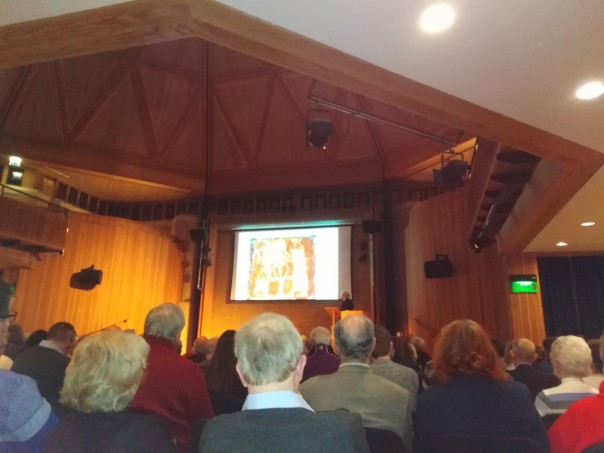
In drawing this lecture to a conclusion, David believes most bishops and kings after Henry shared many of that king’s views rather than siding with Becket, for as he said, there were plenty of senior churchmen in royal government in the late Middle Ages who saw this working partnership as a very good thing! David received the audience’s applause, and after a few questions and Dean Irwin’s vote of thanks a second and perhaps even more appreciative round of applause with several people going down to speak to him afterwards. Thus ended a fascinating lecture which provided many thoughtful insights about the politics of the Translation.
 Centre for Kent History and Heritage
Centre for Kent History and Heritage Sheila Sweetinburgh
Sheila Sweetinburgh 1619
1619

